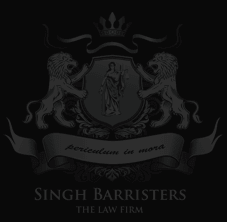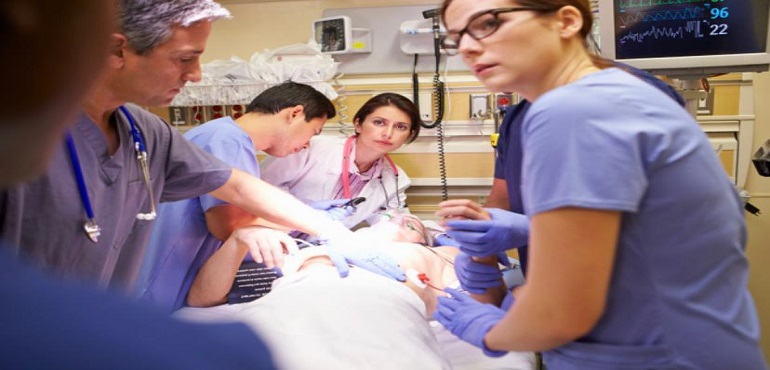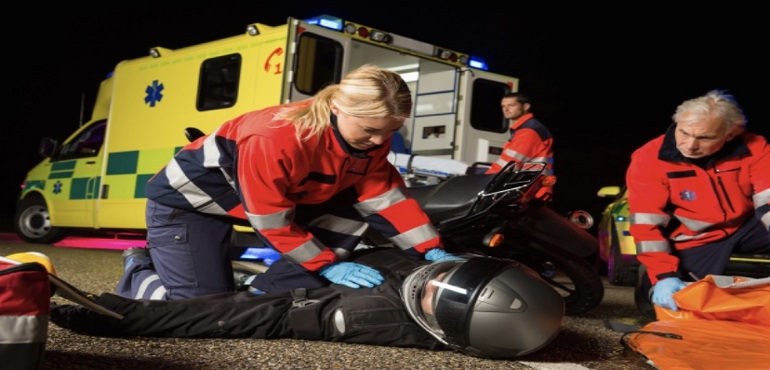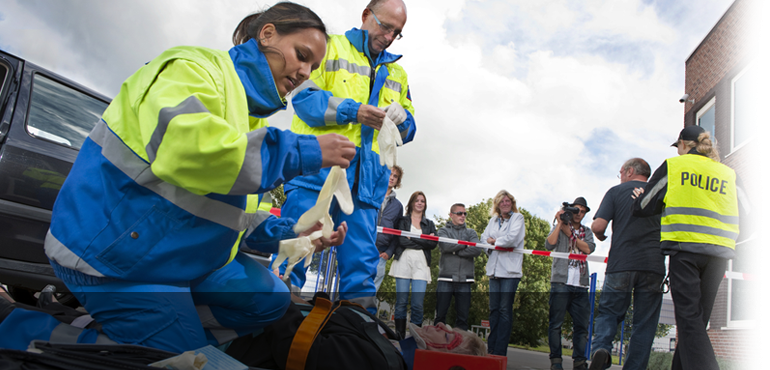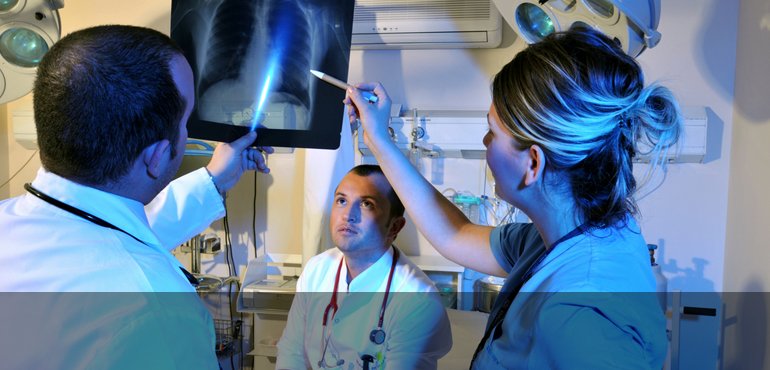| Toll Free : 1844 495 7333(injury hotline- new cases only) | |
| Text a Personal Injury Lawyer 24/7 and get instant help.TM (416 931 5015) | |
| Head Office : 905 495 7333 |
Burn Injuries Fact-Sheet
October 13, 2015When the flesh or skin is injured by heat, electricity, radiation, chemicals or friction it causes a burn injury. They are among the most common household injuries in their minor form, and cause severe disability, permanent damage or death in their extreme form.
Classification
Thermal: Caused by flash, contact, flame and scalds.
- Flash injuries are those caused by explosions of gas or flammable liquids. Sunlight can also cause severe burns with prolonged exposure. The heat is intense but for a very short time, unless the fire spreads via other sources.
- Contact injuries occur from contact with heated metal, plastic, glass, coal etc. and can result in very deep injuries.
- Flame injuries are caused by direct exposure to intense and prolonged heat. Household and building fires, auto accidents, improper use of stoves, etc.
- Scalds are the result of contact with intensely hot liquids like water, grease, oil, tar etc. Some of these liquids stick onto the flesh and need to be surgically removed.
Electrical: burns are caused by AC or DC current and are actually thermal burns of very high intensity.
Radiological: Alpha, beta or gamma radiation exposure causes these burns.
Chemical: burns are caused by contact with strong acids or alkalis.
Friction: burns are an injury caused to the skin by severe abrasion with some other surface.
Measurement of Burns
Additionally, the severity of the burns is measured in “degree” and size of the burn in relation to the body mass. Major, moderate and minor burns have also been differentiated in terms of what kind of management is required.
- First-degree burns: affect only the upper layers of the skin. They heal quite well, with no permanent damage to the skin.
- Second-degree burns: penetrate into the lower layers and are called “partial thickness” burns. These usually leave scars after healing.
- Third-degree burns: extend to all the skin layers and are called “full thickness” burns. They destroy follicles, sweat glands etc which lie in the lower layers of the skin. They take very long to heal, require extensive skin-grafting and leave the skin-system permanently damaged, discolored and scarred after healing.
- Fourth-degree burns: affect the tissues, muscles, nerves and bones. They are life-threatening, with severe damage to all systems and cause disability and irreversible damage. Amputation is usually required, resulting in severely impaired body function.
Treatments
There are several treatment options for burn injuries, based on the degree, size, part of the body affected, age, general health condition etc.
First degree burns are usually managed/treated with home-based care. Soaking in cool water, application of aloe vera gel and antibiotic ointment, oral pain-relief medication etc are sufficient to manage first-degree burns.
Second-degree burns on the face, hands/feet, groin, buttocks etc, require a visit to the ER. Otherwise, second-degree burns can also be managed at home.
Third-degree burns should never be treated at home. You need to call an ambulance or emergency services immediately. The pain may be so severe that you could lose consciousness. There may be blood-loss and shock. Severe burns carry the risk of infections, so never use any home-remedies. The ER personnel must assess breathing, circulation and airways. Respiratory passages may be obstructed, so intubation may be required. The body is to be wrapped in clean sheets on the way to the hospital. Intravenous fluids, medications and immunization shots should be given immediately.
Fourth degree burns are the worst and there is little chance of survival. However, amputation is an option if the extremities are involved.
Surgery and skin grafting may be required for second/third/fourth degree burns. Alternative medicine, psychotherapy, hypnosis, pain-management and various other methods may be effective in some cases. Infection is one of the worst complications feared in burn cases. The prognosis depends on the gender, age and size of the burn and the area affected. Women are more likely to suffer more severe injuries.
How We Can Help
Burns cause severe trauma, pain and suffering for the victims, along with fear and anxiety attacks. The family members require support in terms of dealing with medical bills, insurance companies, doctors, hospitals, etc. As a victim, you are entitled to compensation. Our personal injury lawyers can make a genuine assessment of your case and give a realistic legal opinion. Our serious injury lawyers can assist you with ensuring that the paperwork is done in time and ensure that the victim’s and family’s rights are safeguarded. Our free consultation injury lawyers can provide the right type of legal advice and representation if a lawsuit has to be filed seeking compensation.
If you, your family or a friend has been injured in an accident, please feel free to speak to one of our injury lawyers for a free consultation about how we are able to assist in making a personal injury claim. We consult in all cities across Ontario with a no win no fee guarantee. Our personal injury lawyers have helped victims secure millions of dollars in personal injury cases. Call us Toll Free On our 24/7 Injury Hotline: 1 – 844 495 7333.
Burn Injuries Fact-Sheet
October 13, 2015When the flesh or skin is injured by heat, electricity, radiation, chemicals or friction it causes a burn injury. They are among the most common household injuries in their minor form, and cause severe disability, permanent damage or death in their extreme form.
Classification
Thermal: Caused by flash, contact, flame and scalds.
- Flash injuries are those caused by explosions of gas or flammable liquids. Sunlight can also cause severe burns with prolonged exposure. The heat is intense but for a very short time, unless the fire spreads via other sources.
- Contact injuries occur from contact with heated metal, plastic, glass, coal etc. and can result in very deep injuries.
- Flame injuries are caused by direct exposure to intense and prolonged heat. Household and building fires, auto accidents, improper use of stoves, etc.
- Scalds are the result of contact with intensely hot liquids like water, grease, oil, tar etc. Some of these liquids stick onto the flesh and need to be surgically removed.
Electrical: burns are caused by AC or DC current and are actually thermal burns of very high intensity.
Radiological: Alpha, beta or gamma radiation exposure causes these burns.
Chemical: burns are caused by contact with strong acids or alkalis.
Friction: burns are an injury caused to the skin by severe abrasion with some other surface.
Measurement of Burns
Additionally, the severity of the burns is measured in “degree” and size of the burn in relation to the body mass. Major, moderate and minor burns have also been differentiated in terms of what kind of management is required.
- First-degree burns: affect only the upper layers of the skin. They heal quite well, with no permanent damage to the skin.
- Second-degree burns: penetrate into the lower layers and are called “partial thickness” burns. These usually leave scars after healing.
- Third-degree burns: extend to all the skin layers and are called “full thickness” burns. They destroy follicles, sweat glands etc which lie in the lower layers of the skin. They take very long to heal, require extensive skin-grafting and leave the skin-system permanently damaged, discolored and scarred after healing.
- Fourth-degree burns: affect the tissues, muscles, nerves and bones. They are life-threatening, with severe damage to all systems and cause disability and irreversible damage. Amputation is usually required, resulting in severely impaired body function.
Treatments
There are several treatment options for burn injuries, based on the degree, size, part of the body affected, age, general health condition etc.
First degree burns are usually managed/treated with home-based care. Soaking in cool water, application of aloe vera gel and antibiotic ointment, oral pain-relief medication etc are sufficient to manage first-degree burns.
Second-degree burns on the face, hands/feet, groin, buttocks etc, require a visit to the ER. Otherwise, second-degree burns can also be managed at home.
Third-degree burns should never be treated at home. You need to call an ambulance or emergency services immediately. The pain may be so severe that you could lose consciousness. There may be blood-loss and shock. Severe burns carry the risk of infections, so never use any home-remedies. The ER personnel must assess breathing, circulation and airways. Respiratory passages may be obstructed, so intubation may be required. The body is to be wrapped in clean sheets on the way to the hospital. Intravenous fluids, medications and immunization shots should be given immediately.
Fourth degree burns are the worst and there is little chance of survival. However, amputation is an option if the extremities are involved.
Surgery and skin grafting may be required for second/third/fourth degree burns. Alternative medicine, psychotherapy, hypnosis, pain-management and various other methods may be effective in some cases. Infection is one of the worst complications feared in burn cases. The prognosis depends on the gender, age and size of the burn and the area affected. Women are more likely to suffer more severe injuries.
How We Can Help
Burns cause severe trauma, pain and suffering for the victims, along with fear and anxiety attacks. The family members require support in terms of dealing with medical bills, insurance companies, doctors, hospitals, etc. As a victim, you are entitled to compensation. Our personal injury lawyers can make a genuine assessment of your case and give a realistic legal opinion. Our serious injury lawyers can assist you with ensuring that the paperwork is done in time and ensure that the victim’s and family’s rights are safeguarded. Our free consultation injury lawyers can provide the right type of legal advice and representation if a lawsuit has to be filed seeking compensation.
If you, your family or a friend has been injured in an accident, please feel free to speak to one of our injury lawyers for a free consultation about how we are able to assist in making a personal injury claim. We consult in all cities across Ontario with a no win no fee guarantee. Our personal injury lawyers have helped victims secure millions of dollars in personal injury cases. Call us Toll Free On our 24/7 Injury Hotline: 1 – 844 495 7333.

